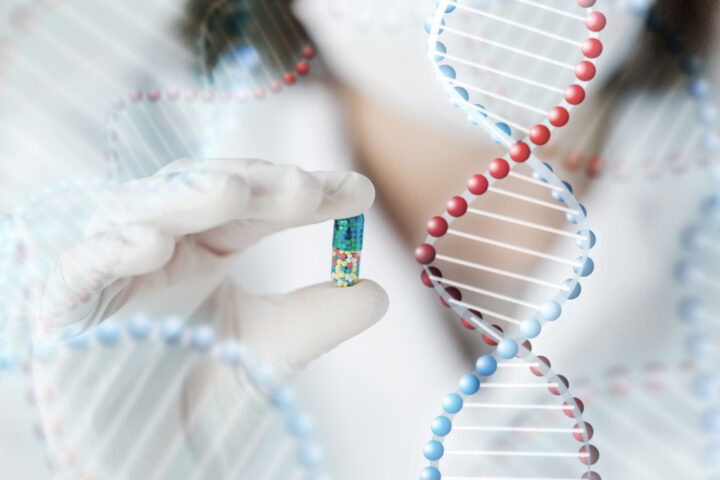For decades, researchers have sought the ultimate cure for blindness — a way to restore lost vision and protect neurons from degenerative diseases. A new study by Drake et al. may bring us one step closer, demonstrating how cellular rejuvenation could shield neurons from inflammation-induced damage, with implications for vision restoration and beyond.
Unmasking the Culprit: Inflammation as a Catalyst for Neuronal Aging
Multiple sclerosis (MS) stands as a testament to the havoc wreaked by chronic neuroinflammation. In this autoimmune disorder, the body’s defense system erroneously targets the myelin sheath encasing neurons, leading to disrupted neural communication and subsequent neurodegeneration. Drake et al. embarked on a mission to decipher the molecular underpinnings of this process, focusing on retinal ganglion cells (RGCs) in an experimental autoimmune encephalomyelitis (EAE) mouse model—a well-established proxy for human MS.
Their findings were revelatory. Through comprehensive RNA sequencing, the team discerned that RGCs in EAE-afflicted mice exhibited gene expression patterns strikingly akin to those observed in naturally aged neurons. This convergence suggests that inflammation doesn’t merely damage neurons but actively propels them into a premature aging state. Markers of this accelerated aging encompassed DNA damage, aberrant chromatin modifications (notably elevated H3K27me3 levels), and irregularities in the nuclear lamina. Such alterations compromise the structural integrity and functionality of neurons, rendering them more susceptible to degeneration.
The Promise of Rejuvenation: Leveraging OSK Factors
In a bid to counteract this inflammation-induced aging, the researchers turned to the realm of cellular reprogramming. Building upon the foundational work of Shinya Yamanaka, who identified four pivotal transcription factors—Oct4, Sox2, Klf4, and c-Myc (collectively termed OSKM)—capable of reverting mature cells to a pluripotent state, Drake et al. opted for a modified approach. They employed a subset of these factors: Oct4, Sox2, and Klf4, commonly referred to as OSK.
The rationale behind excluding c-Myc from the reprogramming cocktail is multifaceted. While c-Myc enhances reprogramming efficiency, its oncogenic potential raises concerns about tumorigenesis. Studies have demonstrated that omitting c-Myc reduces the risk of uncontrolled cell proliferation, making the OSK combination a safer alternative for therapeutic applications. Moreover, research indicates that continuous induction of OSK does not increase tumor incidence, suggesting that cellular identity is maintained without oncogenic transformation.
To deliver these factors to the target neurons, the team utilized an adeno-associated virus vector, AAV2, engineered to carry the OSK genes. This method ensured precise delivery and expression of the rejuvenating factors within the RGCs.
A Delicate Balance: Navigating the Therapeutic Tightrope
While the prospect of neuronal rejuvenation is enticing, it necessitates a cautious approach. The process of reprogramming cells to a more youthful state involves resetting their epigenetic markers, which, if not meticulously controlled, can lead to dedifferentiation. This state renders cells more primitive and stem-like, potentially predisposing them to tumorigenesis.
The therapeutic window for such interventions is exceedingly narrow. Transient expression of reprogramming factors is paramount; prolonged or excessive activation can tip the scales toward malignancy. Drake et al.’s study underscores this balance, demonstrating that controlled, temporary induction of OSK can confer neuroprotection without compromising cellular identity. However, the exact parameters—such as optimal duration and expression levels—require further elucidation to mitigate potential risks.
Translating Benchside Discoveries to Bedside Therapies
The implications of this research are profound, yet several hurdles remain before such therapies can be seamlessly integrated into clinical practice.
- Timing of Intervention: Drake et al.’s experiments primarily focused on preventive measures, administering the AAV2-OSK therapy prior to the onset of neurodegeneration. For patients already grappling with MS or similar conditions, it’s imperative to determine whether this approach can reverse existing damage or merely halt further progression.
- Safety Profile: Ensuring the safety of reprogramming therapies is paramount. While the study reported no immediate adverse effects, long-term surveillance is essential to rule out delayed tumorigenesis or other unforeseen complications.
- Delivery Mechanism: The use of viral vectors, such as AAV2, raises questions about immune responses and the potential for insertional mutagenesis. Developing non-viral delivery systems or refining viral vectors to enhance specificity and reduce immunogenicity could address these concerns.
- Individual Variability: Genetic and environmental factors contribute to the heterogeneity of neurodegenerative diseases. Personalized approaches, perhaps involving patient-specific iPSCs, might be necessary to achieve optimal outcomes.
Broader Implications: Beyond Multiple Sclerosis
While MS served as the focal point of this study, the broader principles gleaned have far-reaching applications. Neuroinflammation is a common denominator in various neurodegenerative disorders, including Alzheimer’s and Parkinson’s diseases. The ability to rejuvenate neurons and bolster their resilience against inflammatory insults could revolutionize therapeutic strategies across a spectrum of conditions.
Moreover, this research accentuates the intricate interplay between aging and disease. By targeting the molecular signatures of aging within neurons, it may be possible to enhance cognitive function and extend healthspan, even in the absence of overt disease.
Rewriting the Fate of Aging Neurons
Drake et al.’s exploration into the rejuvenation of neurons via partial cellular reprogramming offers a beacon of hope in the battle against neurodegenerative diseases. By elucidating the mechanisms through which inflammation accelerates neuronal aging and demonstrating a viable method to counteract this process, the study paves the way for a future where neurodegeneration is not an inevitable consequence of aging, but a condition that can be mitigated—perhaps even reversed.
The implications extend beyond multiple sclerosis. If controlled cellular rejuvenation can protect neurons from inflammation-induced damage, then similar strategies may hold promise for conditions like Alzheimer’s, Parkinson’s, and even age-related cognitive decline. This could usher in a paradigm shift in medicine—one where neurodegenerative diseases are not merely treated but prevented at their root cause by restoring youthful function at the cellular level.
However, the challenges ahead remain formidable. The therapeutic window for reprogramming is narrow, and even minor miscalculations in timing or dosage could tip the balance toward undesired dedifferentiation, potentially leading to oncogenesis. Long-term safety data, robust delivery mechanisms, and further refinements in the control of gene expression are critical before these findings can transition from laboratory breakthroughs to clinical reality.
Yet, for all its hurdles, this research represents a crucial step toward redefining the boundaries of longevity science. If the key to extending neural function lies in reversing inflammatory aging at the molecular level, then the future of neuroprotection may no longer be about slowing decline—but about writing an entirely new script for the aging brain.
Sources
- Lu, Y., Brommer, B., Tian, X., Krishnan, A., Meer, M., Wang, C., … & Sinclair, D. A. (2020). Reprogramming to recover youthful epigenetic information and restore vision. Nature, 588(7836), 124–129. https://doi.org/10.1038/s41586-020-2975-4
- McCauley, B. S., Sun, W., Jones, R. C., … & Zhao, R. (2024). Tumor initiation and early tumorigenesis: molecular mechanisms and epigenetic reprogramming. Nature Reviews Cancer, 24(6), 455–469. https://doi.org/10.1038/s41568-024-00567-y
- Ocampo, A., Reddy, P., Martinez-Redondo, P., Platero-Luengo, A., Hatanaka, F., Hishida, T., … & Izpisua Belmonte, J. C. (2021). Cellular reprogramming and epigenetic rejuvenation. Clinical Epigenetics, 13, 103. https://doi.org/10.1186/s13148-021-01085-7
- Wang, H., Yang, J., Jiang, W., Zhou, W., & Wang, Y. (2021). In vivo partial reprogramming of myofibers promotes muscle regeneration. Nature Communications, 12, 2403. https://doi.org/10.1038/s41467-021-22665-2
- Takahashi, K., & Yamanaka, S. (2020). Human transcription factors responsive to initial reprogramming: OCT4, SOX2, KLF4, and MYC. Nature, 586(7827), 183–190. https://doi.org/10.1038/s41586-020-2765-6
- Kim, J., Zaret, K. S., & Li, Y. (2018). Comparison of reprogramming factor targets reveals both species-specific and conserved mechanisms. BMC Genomics, 19, 798. https://doi.org/10.1186/s12864-018-5116-9
- Lu, X., Zhao, Z., Zhu, Y., & Wang, J. (2017). Transient transcription factor (OSKM) expression is key towards safe cellular reprogramming. Cell Stem Cell, 20(3), 373–386. https://doi.org/10.1016/j.stem.2017.02.011
- Nakagawa, M., Koyanagi, M., Tanabe, K., … & Yamanaka, S. (2015). OSKM stoichiometry determines iPS cell reprogramming efficiency. Nature Communications, 6, 6180. https://doi.org/10.1038/ncomms7180
- Wang, T., Zhang, Y., & Yu, X. (2020). Prevention of tumor risk associated with the reprogramming of human pluripotent stem cells. Stem Cell Reports, 15(4), 520–535. https://doi.org/10.1016/j.stemcr.2020.06.004
- Ocampo, A., Reddy, P., Martinez-Redondo, P., Platero-Luengo, A., Hatanaka, F., Hishida, T., … & Izpisua Belmonte, J. C. (2020). Reprogramming to recover youthful epigenetic information and extend lifespan. Aging Cell, 19(10), e13127. https://doi.org/10.1111/acel.13127
- Zhao, Y., & Huang, X. (2019). The occurrence and development of induced pluripotent stem cells: mechanisms and applications. Frontiers in Cell and Developmental Biology, 7, 253. https://doi.org/10.3389/fcell.2019.00253
- Li, X., Han, H., Zhang, Y., & Li, J. (2022). Possible strategies to reduce the tumorigenic risk of cellular reprogramming. MDPI Cells, 11(4), 588. https://doi.org/10.3390/cells11040588
- Zhang, H., & Yu, X. (2023). Tumorigenicity risk of iPSCs in vivo: nip it in the bud. Oxford Academic, 12(6), 455–478. https://doi.org/10.1093/stemcells/szz134
- Feng, Z., & Liu, J. (2023). In vivo epigenetic reprogramming of primary human colon cancer stem cells. Stem Cell Reports, 18(5), 1236–1250. https://doi.org/10.1016/j.stemcr.2023.03.012
- Zhang, Y., & Belmonte, J. C. I. (2021). Chemically induced reprogramming to reverse cellular aging. Aging-US, 13(11), 13456–13478. https://doi.org/10.18632/aging.202134












